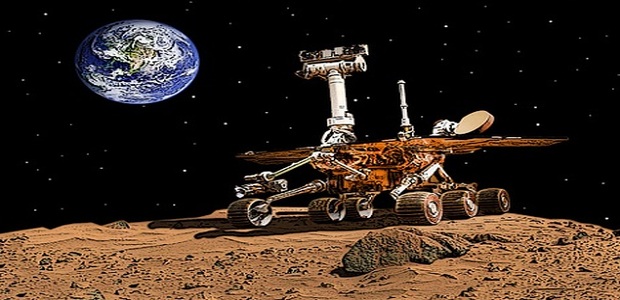One of the primary goals of NASA scientists is to research on the habitability, finding fossils and organic carbon on planet Mars. Both the Curiosity and Opportunity rovers have been entrusted of searching ancient life on Mars. So what has made this red planet the center of attraction? WATER on Mars.
Years ago, astronomers detected signs of Mars’ watery past. Early evidence came from imaging large numbers of winding channels on the Red Planet. Various images suggest abundant liquids of some type flowed on the planet at some point in its history. In 1972, the Mariner 9 spacecraft orbited Mars and took photos of what appear to be dry riverbeds scattered over the planet’s surface. More recently, Tim Parker of the California Institute of Technology suggested many dry lakebeds also exist on Mars — although this interpretation is not as clear as that of the riverbeds.
Parker also interpreted some features as ancient shorelines, and even some as basins once filled by lakes. Many of the features Parker interpreted and some of the river channels are scarred by craters, suggesting the Red Planet’s watery past had concluded by about 3.5 billion years ago. The clear implication is that Mars had a watery past and, for some reason, dried out, but not completely.
Using images from the Mars Global Surveyor satellite, planetary scientists Devon Burr, Alfred McEwen, and colleagues looked carefully at Marte Vallis, a river channel that extends from Elysium Planitia into Amazonis Planitia. Freshly sculpted features and a lack of craters indicate this river system harbored water in the last 40 million years. Astronomers believe a significant amount of water lies locked inside underground martian aquifers. Future explorers will drill into the planet’s mantle to explore the nature of this watery deposit.
In 2000, Mars Global Surveyor scientists Ken Edgett and Michael Malin explored another feature that suggests a water-laden past for Mars. Edgett and Malin identified numerous “gullies” extending from rocky outcrop high- lands to lower portions of hills. They appear to be analogs to features in Canada, Iceland, and Greenland, where gullies form when water saturates the ground and then flows downward. If these martian features were formed by water, the implication is rather amazing in that large flows of water must have happened recently — and maybe even still go on today.
The mysterious source of such flowing water might be ice that suddenly melts. The flows would have to be significant to leave surface features because the temperatures and pressures on Mars’ surface today mean water quickly evaporates once it reaches the surface.
So if Mars was wet and, therefore, also relatively warm in the past, why did it dry out? Planetary scientists don’t yet know, but data from the Mars Exploration Rovers and Mars Express suggest a substantial climate change occurred some 600 million years after the planet’s formation. One study released in 2006 by French astrophysicist Jean-Pierre Bibring suggests volcanic eruptions drove Mars’ changing climate.
By studying the mineralogy of gypsum and hematite on the martian surface, Bibring, and his colleagues found evidence of a heavy period of volcanism. If life did gain a toehold on Mars by this point, the climatic change may have shifted the planet to a less hospitable place. Moreover, Mars cooled following this period of volcanism. During the cooling, astronomers believe Mars’ magnetic field dissipated because the planet’s molten iron core solidified. When the Red Planet’s protective shield no longer sheltered living creatures, the solar wind may have stripped away much of the martian atmosphere and sent much of the planet’s water into space.
After a rather earth-like start, Mars may have — on a planetary timescale — suddenly turned cold, dry, and hostile to living things.
There are still plenty of questions which still remain to be answered like whether there is a distant possibility of life on Mars and other planets of our solar System. Even if there is a slightest possibility of finding water on Mars, that would be one of the biggest achievement in human history. As of now water in Mars is only present in the form of ice visible at the north ice polar cap and a very small portion is present in the form of vapour in its atmosphere.
-end-


































